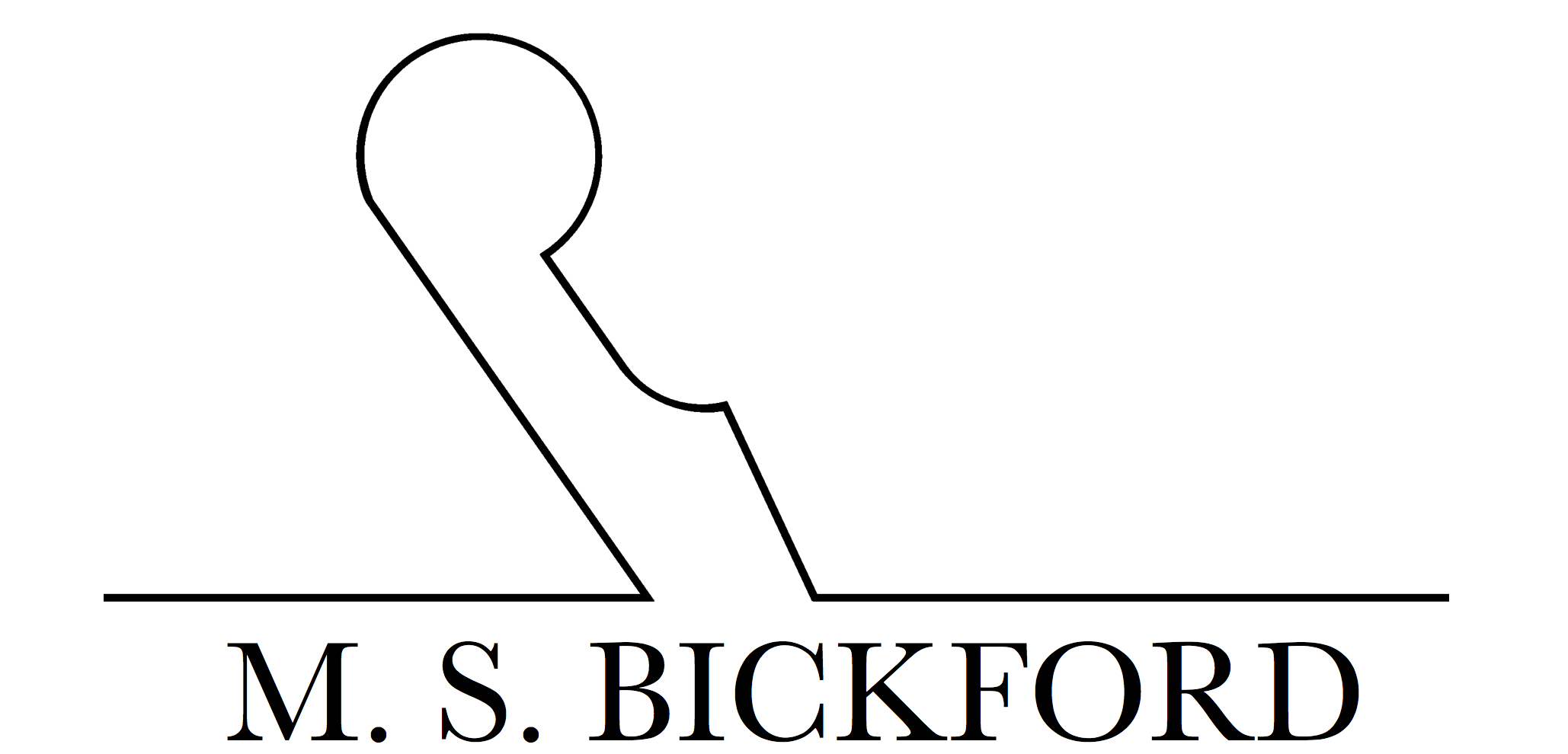Hollows and rounds are seemingly difficult to steer, especially if you have the wrong strategy. If a profiled plane has a single point for its contoured sole to ride, the chance that you end up with the beginning of 7′ molding equaling the end is slim. The chance of the beginning equaling the ending and equaling what you want? Good Luck!
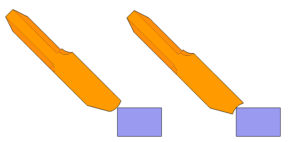
Hollows and rounds shall be steered by giving each plane two points to ride upon, instead of just one.
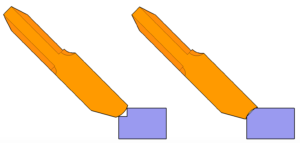
Let the rabbets and chamfers dictate the direction that the planes are presented.
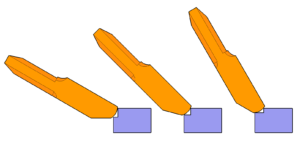
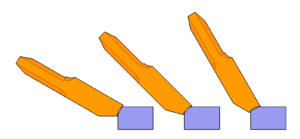
Changing the dimensions of the guiding principal, a rabbet for a round and a chamfer for the hollow, shall change the final product.
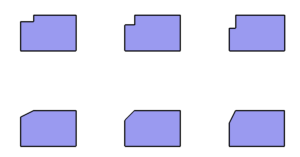
*Take note that the rounds are guided by the two tips of a rabbet. The hollows are guided by the two edges of a chamfer.
Let’s look at some real-life examples now.
Do you want an ovolo at 30 degrees? One hollow? One chamfer at 30 degrees.
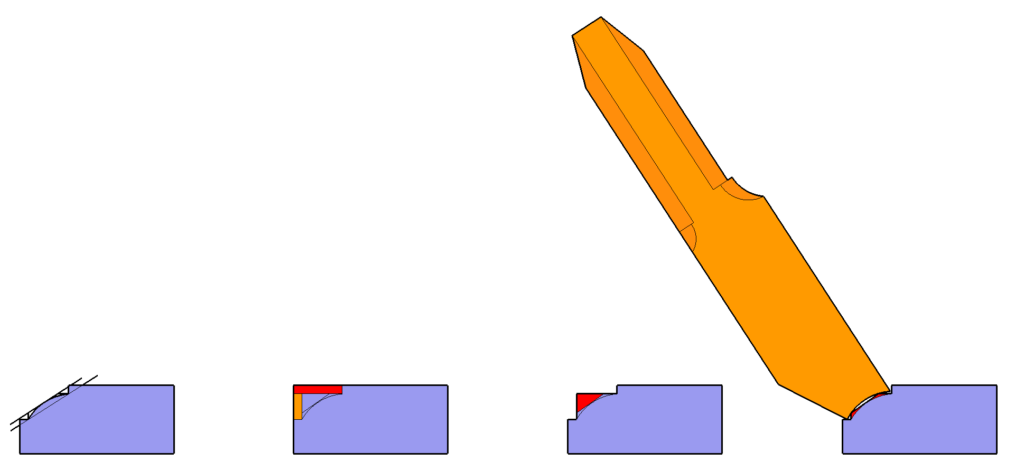
(Note: the vertical and horizontal fillets are defined by rabbets)
Do you want a cove at 30 degrees? one round? the arrises of the guiding rabbet shall be at 30 degrees.

Do you want an ogee at 30 degrees? one hollow and one round–one 30-degree chamfered rabbet for the hollow, the tips of a single rabbet for the round, also at 30 degrees.
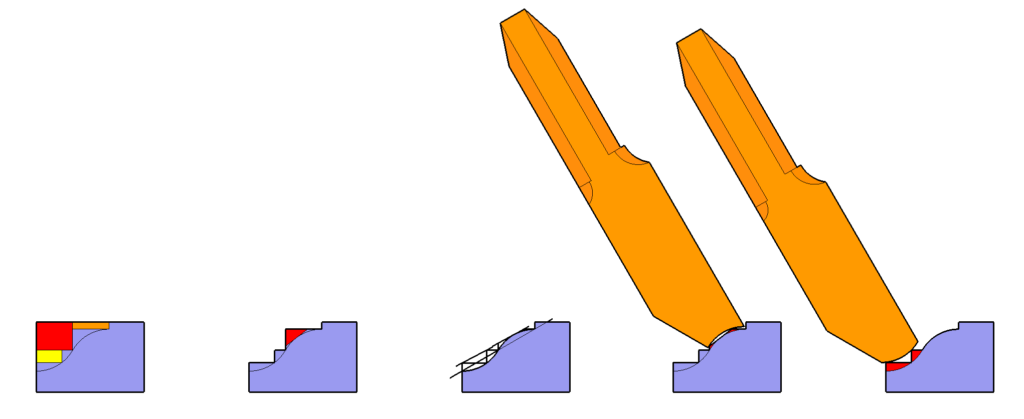
An ogee at 45 degrees? Look at the differences in the rabbets below vs. above. Everything is laid out at 45 degrees here.
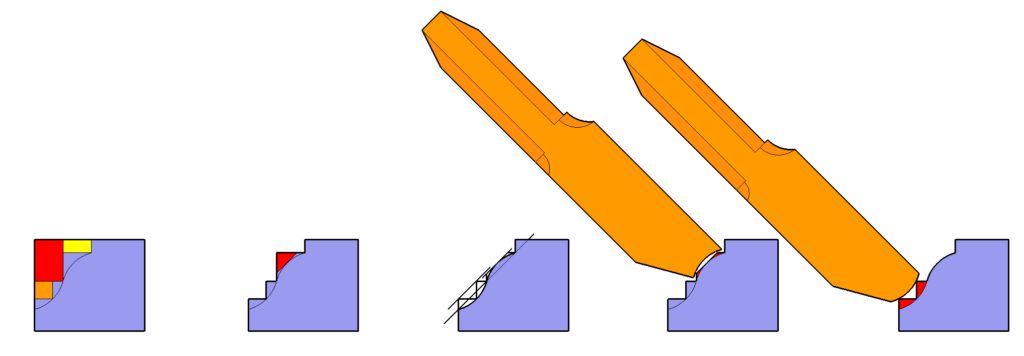
A reverse ogee at 30 degrees? Again, look at the different layout. Same tools, similar rabbets, different results.
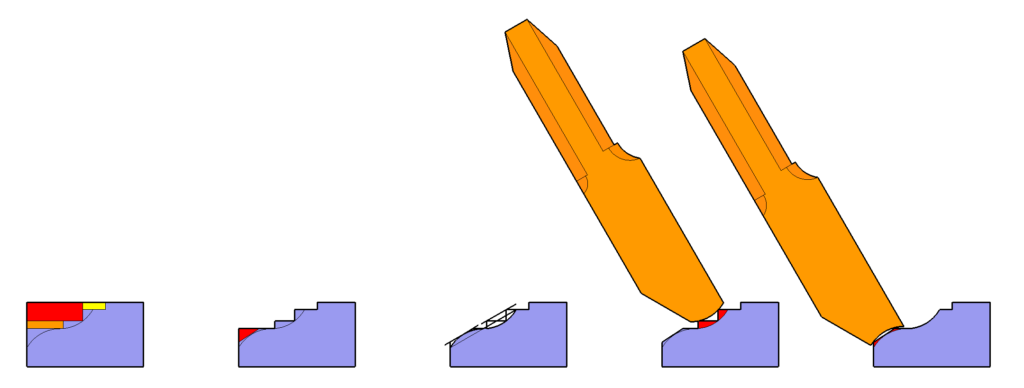
Do you see any features above that you recognize from the previous two moldings (reverse ogee and astragal, cove and ovolo) at which we looked?

Additionally, look at how much material is being removed by the profiled planes in the perfect world of Google’s Sketch-Up. It’s minimal.
Next week we’ll specifically look at how rabbets serve as a depth gauge.
One last thing: I am not the person to speak to regarding design. I am a copycat when it comes to my craft. This is the reason I bought my first antique planes–to copy. Anybody looking for elements regarding design should check out Lie-Nielsen’s library. I’ve heard very good things about a few of their dvds, including those by Don McConnell, Larry Williams and George Walker. They are each extraordinarily knowledgeable in the subject.
